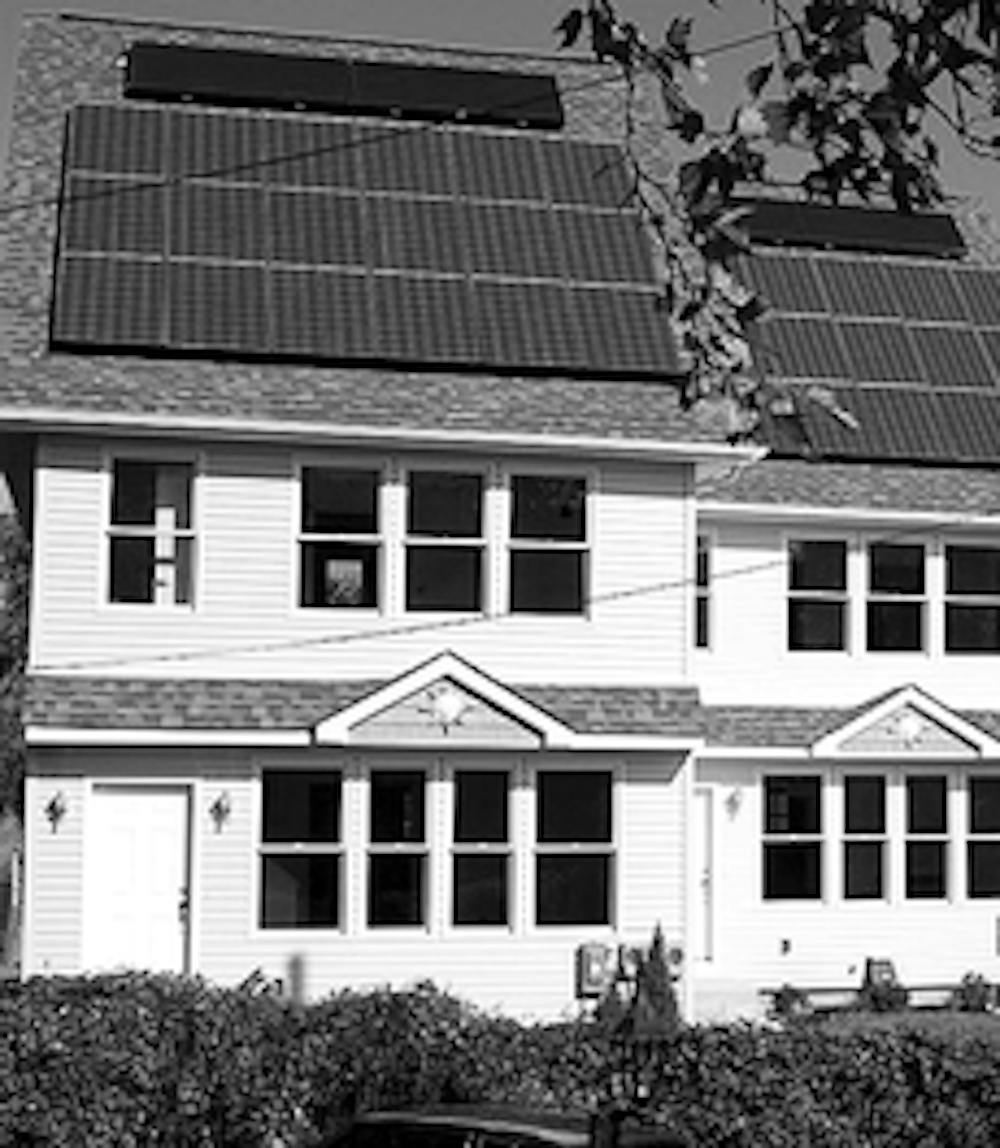As fuel costs rise, the benefits of solar energy are often touted - but solar power is easier to implement in some places than others.
The construction of a solar community in Northeast Philadelphia displays the benefits of obtaining energy from the sun. But it also highlights the difficulties in applying such technology on a large-scale, such as at institutions like Penn.
Maple Point is a 38-home community of town houses, all of which incorporate a number of sustainable design features, most notably solar-energy panels.
"We have quite possibly built the most energy efficient homes in the city of Philadelphia today," the community's builder, Don Bradley, said in a press release.
Bradley received the 2008 Philadelphia Sustainability Award last month for his work on the project.
The homes are being marketed as having a high value and low energy costs. The homes, which include three to four bedrooms, are priced at $259,900.
Average home prices in Philadelphia average $136,679 for three bedrooms and $317,867 for four bedrooms, according to Trulia, a real-estate search company.
The homes will save the owners up to 80 percent on energy costs, thanks in large part to the presence of the solar panels on the roof, Bradley said.
A ribbon-cutting ceremony for the community will take place on April 5, when the development will become open to the general public.
The project's expected benefits raise larger questions about solar energy, such as why it isn't implemented on Penn's campus.
For starters, officials say solar panels are not cost-effective for major institutions.
"Penn pays a much lower rate for electricity than individuals," said Senior Facilities Planner Daniel Garofalo, "Putting a [solar panel] on a home would get a quicker return, since the individual pays more for energy. Since energy is cheap for a university, why go solar?"
According to Garofalo, it would take at least 20 years for the University to break even after installing solar panels. Garofalo said that figure was based on estimates that a three-by-five-foot panel costs $600 and could produce as little as $30 worth of electricity per year.
Garofalo added that solar energy is difficult to utilize on campus because there are few buildings that are not shaded by trees and thus consistently exposed to the sun's rays.
The first major Penn building to have solar panels will be the LEED-certified Horticultural Center at the Morris Arboretum, an off-campus project.
Penn is considering bringing solar energy to campus by making some of its roofs available for privately owned solar panels.
"The supplier and installer would own the panels but use our roofs," said Garofalo. "A couple of vendors have approached us recently."
One possible site for such a system would be the Van Pelt library, which has a large, flat roof that is not shaded by trees.



